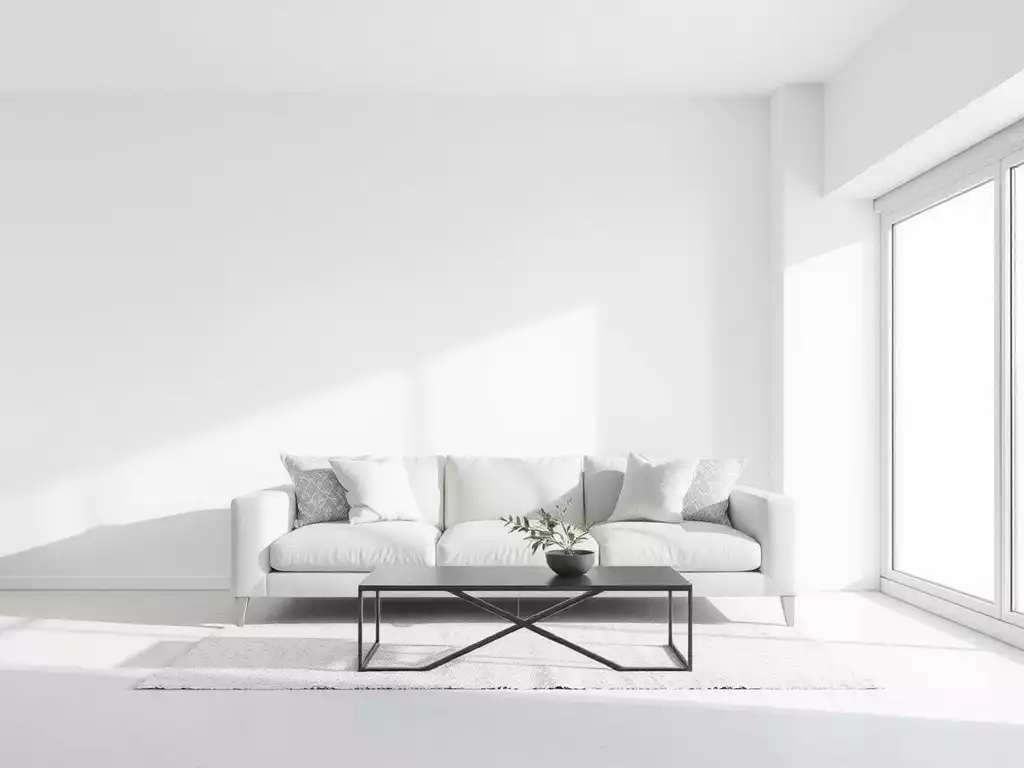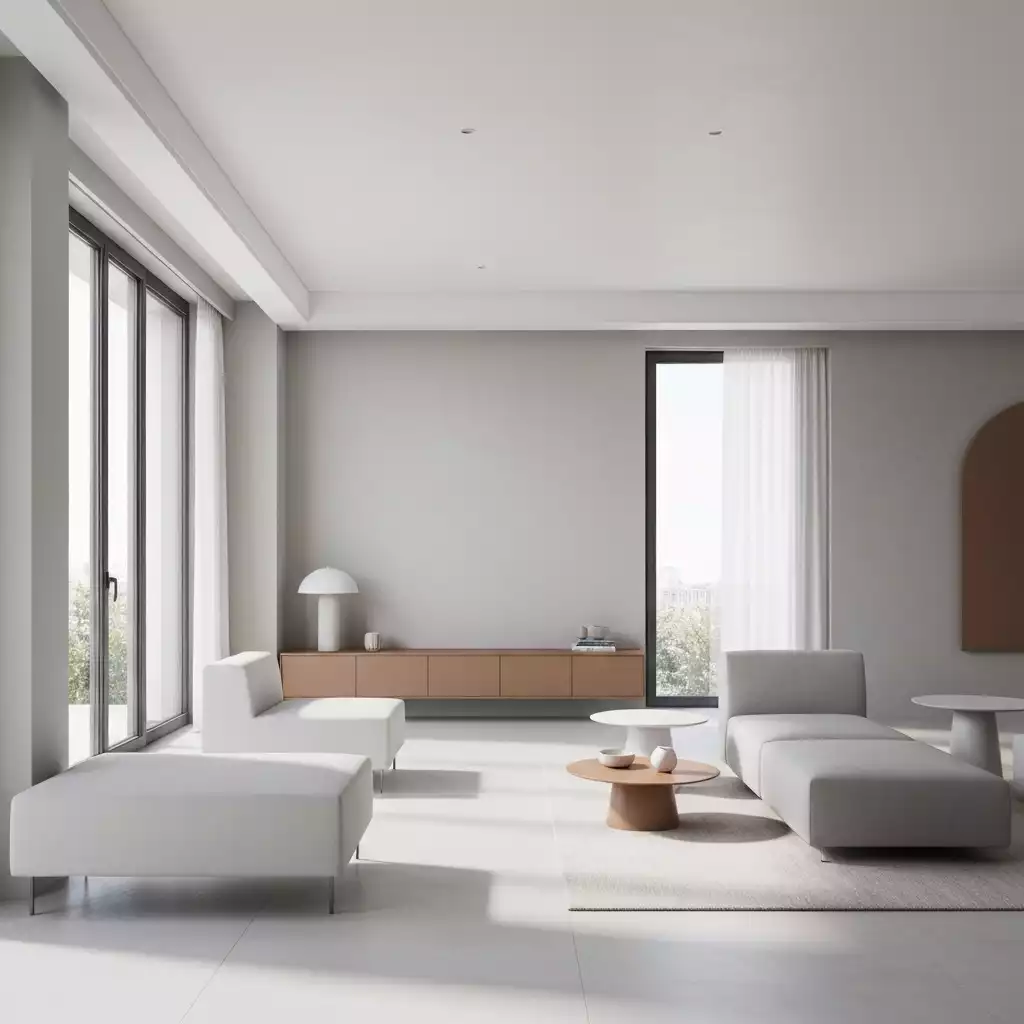Curious about how a simplified living space can transform your everyday life? Minimalist interiors might just be the answer! This design philosophy emphasizes clarity, functionality, and calm, creating environments that are not only visually appealing but also conducive to a peaceful lifestyle.
What You Will Learn
- Minimalist interiors embody the principle of “less is more,” focusing on simplicity and functionality.
- Core principles of minimalist design include simplicity, functionality, and intentionality in selecting decor.
- Combining minimalist aesthetics with styles like Scandinavian and Japanese enhances tranquility while reflecting personal taste.
- Incorporating sustainable materials supports eco-friendliness and adds natural beauty to minimalist spaces.
- Adopting a minimalist lifestyle can lead to improved focus, mood, and financial savings by reducing clutter.
Understanding Minimalist Interiors and Their Appeal
Minimalist interiors focus on the idea of “less is more.” This design style emphasizes simplicity and functionality, creating spaces that feel open and uncluttered. Key characteristics include a limited color palette, clean lines, and a strong emphasis on the essentials. The core principle is to highlight what truly matters, removing excess and distractions that might overwhelm a space.
In minimalist design, every piece serves a purpose, contributing to the overall harmony of the room. This approach not only makes a space look aesthetically pleasing but also promotes a sense of calm and clarity. Minimalist interiors are perfect for those who appreciate simplicity and seek a peaceful living environment.
What Are Minimalist Interiors?
Minimalist interiors prioritize an uncluttered and organized space. They often incorporate elements like:
- Neutral color palettes, including whites, grays, and soft earth tones
- Simple furniture with functional designs
- Limited decorative items to reduce visual noise
- Natural light emphasized through large windows or open layouts
By adhering to these principles, minimalist interiors create a serene atmosphere, allowing individuals to focus on what truly matters in their living space.
The Aesthetic of Clean Lines and Functional Spaces
In minimalist design, clean lines play a crucial role. They create a sense of order and elegance, guiding the eye through the space without distraction. Neutral color palettes further enhance this effect, promoting a harmonious environment where each element has its place.
Open spaces are essential as they foster a feeling of freedom and expansiveness. By eliminating clutter, minimalist interiors allow for easy movement and interaction. To achieve this aesthetic, consider incorporating:
- Furniture that is sleek and unobtrusive
- Decorative elements that are purposeful and few
- A layout that encourages flow and functional use of space
Ultimately, the combination of clean lines, neutral colors, and open spaces culminates in a tranquil living environment, making minimalist design highly appealing.
Design Principles for Achieving Minimalist Interiors
Core Principles of Minimalist Interior Design
To create a truly minimalist interior, one must understand the core principles that guide this design philosophy. These include:
- Simplicity: Focus on basic forms and structures without unnecessary embellishments. This concept is explored further in an article on Simplicity in Minimalist Interiors, which delves into its psychological impact.
- Functionality: Every item should serve a clear purpose, enhancing the usability of the space.
- Intentionality: Each piece should be chosen with care, reflecting the owner’s values and lifestyle.
By incorporating these principles, you can create a minimalist space that feels both practical and inviting. The goal is to design interiors that not only look good but also function well in everyday life.
Combining Minimalism with Other Styles: A Comparative Analysis
Minimalist design can complement various other styles, creating unique spaces that celebrate simplicity while drawing on different aesthetics. For example:
- Scandinavian: This style emphasizes functionality and natural materials, aligning closely with minimalist principles.
- Japanese: Known for its serene and harmonious spaces, Japanese design often incorporates nature, enhancing minimalist aesthetics.
- Industrial: Combining raw materials with minimalist design can create an edgy yet clean look.
By blending these styles, you can achieve a minimalist interior that resonates with your personal taste while maintaining a sense of tranquility.
Incorporating Sustainable Materials in Minimalist Design
Using sustainable materials is essential for enhancing minimalist interiors. Eco-friendly options not only contribute to a healthier planet but also promote a sense of calm and natural beauty. Some sustainable materials to consider include:
- Bamboo or reclaimed wood for furniture and flooring
- Recycled metals and glass for decor and accents
- Natural fabrics like organic cotton or linen for textiles
By integrating these materials into your design, you not only support sustainability but also create a warm and inviting atmosphere in your minimalist space. For more insights on eco-conscious design, an article from Chitkara University explores sustainable interior design as the future of eco-friendly living.
We Want to Hear From You!
As you consider the principles of minimalist design, what aspect resonates with you the most? Is it the simplicity of forms, the easy maintenance, or perhaps the tranquility it brings to your space? Share your thoughts below:
Embracing Minimalism: A Lifestyle Choice
Minimalist interiors can drastically transform your daily life! By adopting a minimalist approach, you create spaces that promote peace and clarity. This lifestyle choice not only simplifies your environment but also encourages you to focus on what truly matters.
One major benefit of minimalist living is the reduction of visual clutter. When your home is filled with less stuff, your mind feels lighter and more organized. As I’ve discovered, living in a minimalist environment fosters creativity and enhances productivity, making daily tasks feel less overwhelming.
- Enhanced Focus: Fewer distractions allow you to concentrate better.
- Improved Mood: A calm space can elevate your overall well-being.
- Easy Maintenance: Minimalism simplifies cleaning and upkeep.
- Financial Savings: Less stuff often means less spending.
Embracing minimalism is a journey, but the rewards can be profound. You may find that living with less leads to a richer, more fulfilling life!
Frequently Asked Questions About Minimalist Interiors
What is the main idea behind minimalist interiors?
What are the core principles of minimalist design?
Can minimalist design be combined with other styles?
Why is incorporating sustainable materials important in minimalist design?
What are the benefits of adopting a minimalist lifestyle?
Next Steps for Your Minimalist Interior Journey
Ready to take the plunge into the world of minimalism? Start by exploring inspiring resources! Check out some leading designers and retailers that focus on minimalist aesthetics. This can provide you with the tools you need to begin your transformation.
- Visit Designers: Look up Norm Architects and John Pawson for inspiration.
- Shop Smart: Explore retailers like Wayfair, West Elm, and Muji for minimalist décor.
- Follow Blogs: Subscribe to minimalist interior design blogs for tips and ideas. For example, a helpful resource from The Spruce offers minimalist decorating ideas to get you started.
Each step on this journey can lead to new discoveries about your style and preferences. Don’t forget, embracing minimalism isn’t just about aesthetics; it’s about fostering a lifestyle that celebrates simplicity and functionality.
Recap of Key Points
Here is a quick recap of the important points discussed in the article:
- Embrace Simplicity: Focus on minimal forms and clear functionalities, eliminating unnecessary clutter.
- Utilize Neutral Colors: Use a limited color palette, including whites, grays, and soft earth tones to promote tranquility.
- Prioritize Functionality: Ensure every piece of furniture and decor serves a specific purpose within the space.
- Incorporate Sustainable Materials: Use eco-friendly materials like bamboo, reclaimed wood, and natural fabrics to enhance your minimalist design.
- Foster Open Spaces: Design layouts that facilitate easy movement and create a sense of freedom.
- Explore Blending Styles: Combine minimalism with other design styles, such as Scandinavian or Japanese, for unique aesthetics.
- Commit to a Minimalist Lifestyle: A minimalist approach can enhance focus, improve mood, and simplify maintenance in your daily life.


